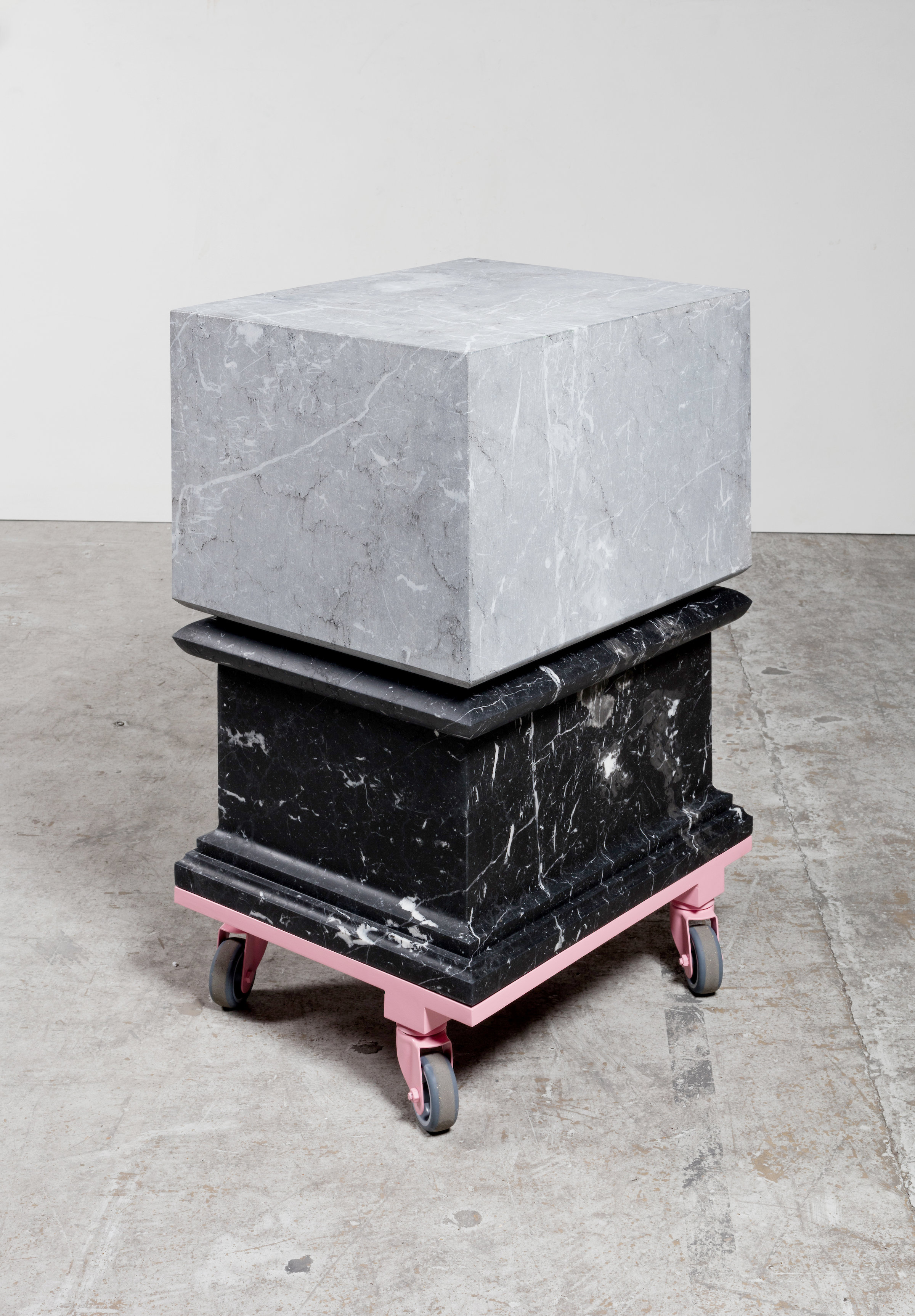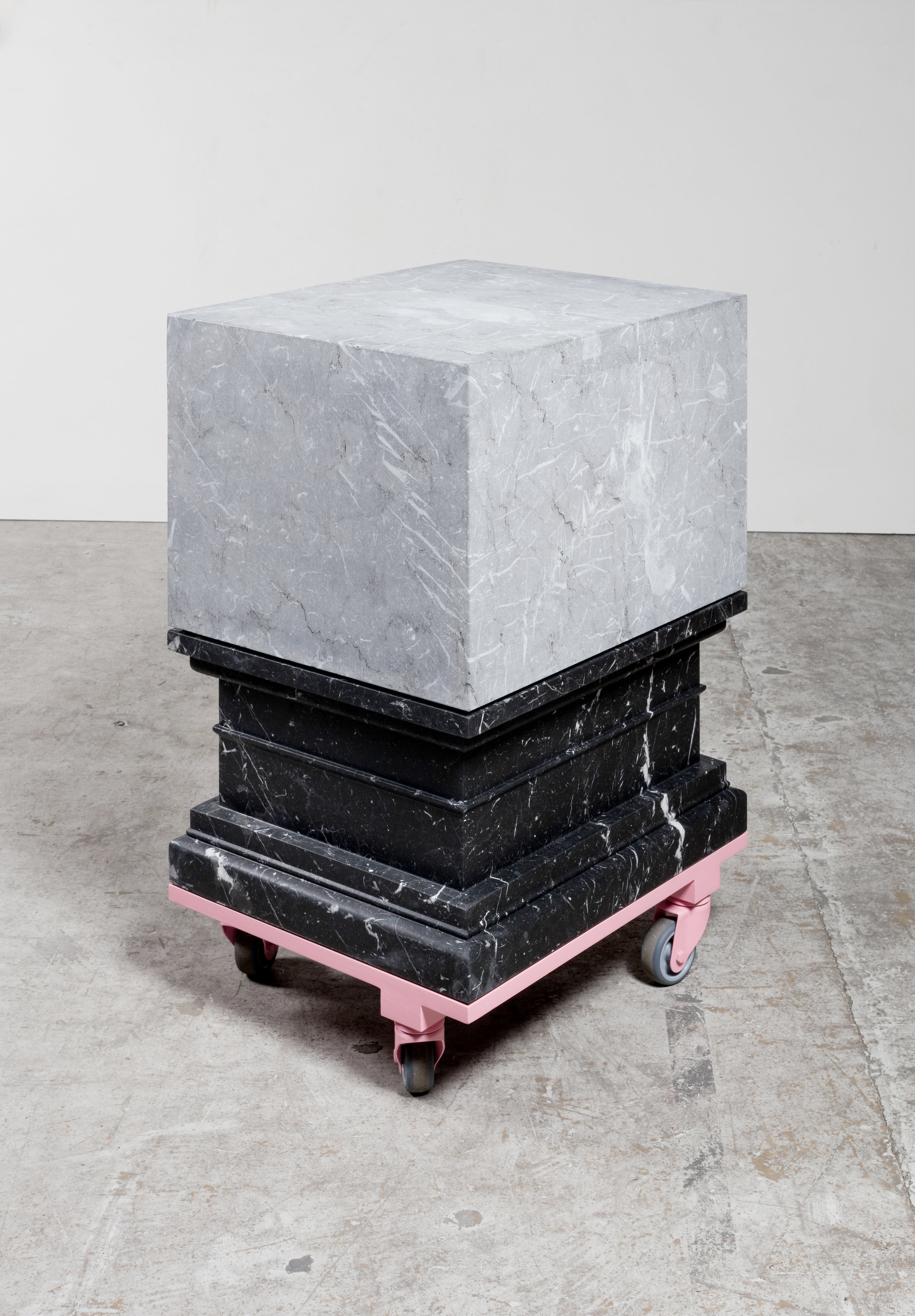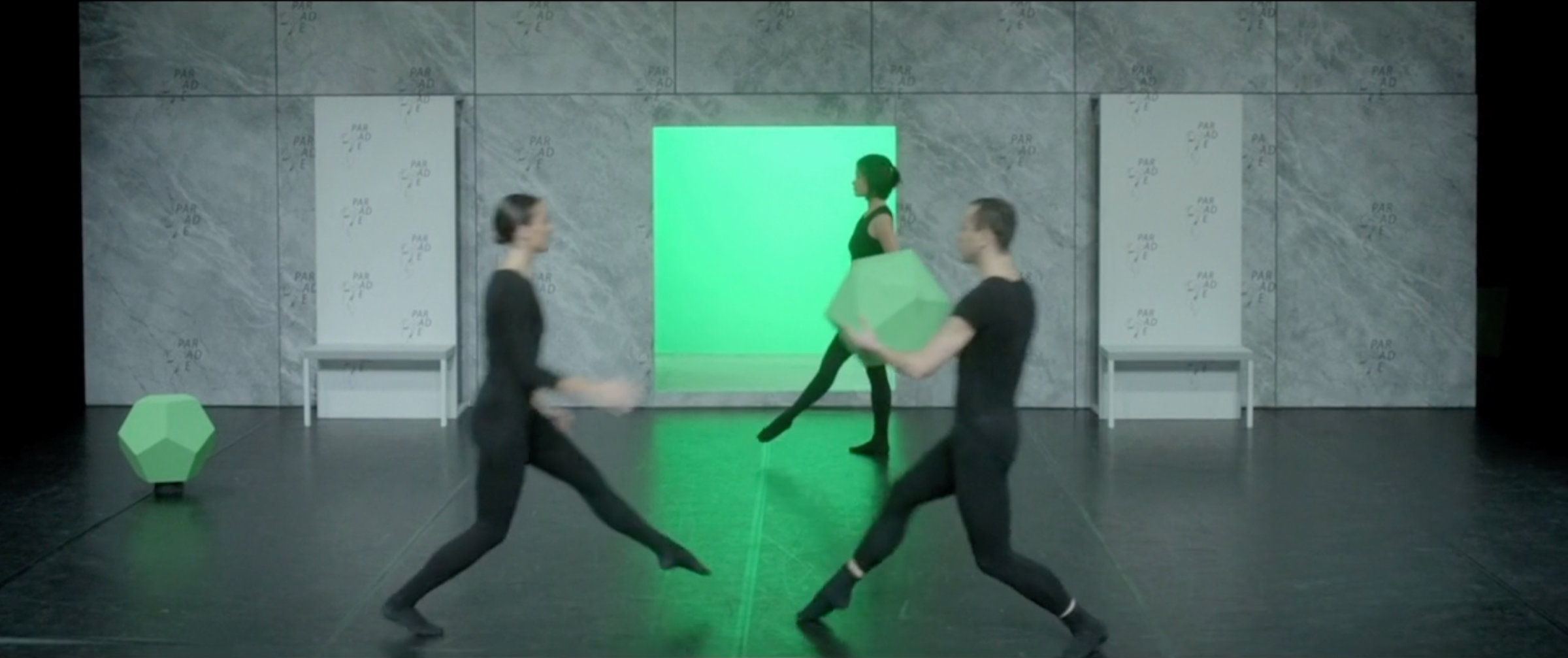Shahryar Nashat

Mother on Wheels (Nero Marquina 1), 2016
Marble, powder-coated steel, caster wheels
88 × 58 × 48 cm
Courtesy the artist and RODEO, London/Piraeus

Mother on Wheels (Nero Marquina 2), 2016
Marble, powder-coated steel, caster wheels
88 × 58 × 48 cm
Courtesy the artist and RODEO, London/Piraeus
Many of Shahryar Nashat’s (*1975 Geneva, lives in Los Angeles) objects and installations explore the human body and its dovetailing with the material culture of a society. For each of the two sculptures titled Mother on Wheels (2016), the artist utilizes a light-gray block of marble and a dark marble pedestal in one cast and placed them in turn on a pink moving dolly. Marble is an august material of great significance in cultural history and recalls like no other the origins of European culture in antiquity. This prized stone played an important role in antique temple architecture and subsequently, as a result of its use in Renaissance sculpture and Baroque church architecture, solidified its place in Europe’s cultural memory. In these two sculptures by the artist, an “ancient” pedestal of an Ionic and a Doric column, respectively, appears to support a marble block that lying on it fits precisely and is characterized by the reduced formal language of modernity. The cool elegance of European modernism appears in one piece together with an ancient base. How are we to think about this connection between the modern and the ancient? Is modernism our new antiquity? Is the origin of our contemporary culture a hybrid of the two?
Using the example of Nashat’s two sculptures, however, entirely different questions can be raised. The heavy blocks do not have any easily malleable or even sensitive, “soft” qualities but rather look immobile and closed-off. The pink steel plate and wheels, by contrast, increase the mobility of the sculpture. These components make us think about the dynamics that can help us to adopt a new and fresh perspective on “our” culture and Europe. For not everything is carved in stone; things have to remain in motion.

Parade, 2014
HD video, color and sound
38 min.
Direction, camera work, stage design: Shahryar Nashat
Choreography: Adam Linder
Courtesy the artist and RODEO, London/Piraeus; David Kordansky Gallery, Los Angeles; Gladstone Gallery, New York/Brussels
With the video Parade (2014) Shahryar Nashat made an adaption of a performance piece by the dancer and choreographer Adam Lindner, thus providing a cinematic setting for the movements of the performers. Nashat managed the conception of the video, stage design and the camera work, while the choreography was conceived by Linder.The work represents a contemporary reflection on the eponymous avant-garde ballet by Jean Cocteau from 1917, in which Erik Satie and Pablo Picasso were also involved, and which is considered one of the first modern ballets.
In front of an apparent marble façade, three performers act various sequences of steps and figures to a melodic loop. Unusual elements of this mise-en-scène include an off-camera voice and a green polyhedron in the stage set, both of which are repeatedly directed at the performers and have a unique authority over events. At one point the voice says: “Presentation! Promote your self-articulation,” and at another: “Public promenading is publicity, personified!” The voice thus addresses not only the contradictory relationship of our individual actions to shared principles of presentation but also the increasing pressure for self-presentation. Through the choreography of Lindner the human being is thought of as an entity in whose body are inscribed forms of expression that are marked by political forces such as, for example, the body politic. With recourse to the multilayered meanings of the term “parade,” the work combines, by means of the dancers, various motifs from ballet and contemporary dance but also from the circus, busking, and dressage. Different moments result, some of which are characterized by freedom and hostility toward social rules while others point to social obedience and limitations.
Last but not least, the work alludes to the great value placed on theater and dance in the society of Greek antiquity, which corresponded not only to the entertainment of the audience but also to a great importance attached to citizens participating in public events and creative forms of its critique which were thereby demonstrated in a truly exemplary way. It is further suspected that, much like the setting according to Cocteau, the squares in front of ancient theaters and temples resembled a colorful bustle where sellers offered valuable goods and sacrificial offerings to present in the temple and actors and artistes tried to attract the attention of attendees.
Shahryar Nashat
has had solo exhibitions at the Museum of Modern Art, New York; the Swiss Institute, New York; SMK, the National Gallery of Denmark, Copenhagen; the Rodeo Gallery, Athens; Kunsthalle Basel, Basel; the Carpenter Center for the Visual Arts, Harvard University, Cambridge; Palais de Tokyo, Paris; Studio Voltaire, London; and Kunstverein Nürnberg, Nuremberg, among others.
His work has been included in group exhibitions at the Auckland Art Gallery, Auckland; the Musée d’Art Moderne de la Ville de Paris; The Hunterian Art Gallery, Glasgow; the Moscow Museum of Modern Art, Moscow; the Kunsthaus Hamburg, Hamburg; at the Biennale de Montréal, Montréal; the Biennial of Sydney, Sydney; the Haus der Kunst, Munich, Munich; the CCA Wattis Institute for Contemporary Arts, San Francisco; the 8th Berlin Biennial, Berlin; the Kunsthalle Wien, Vienna; and the Detroit Museum of Art, Detroit.